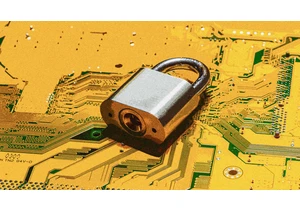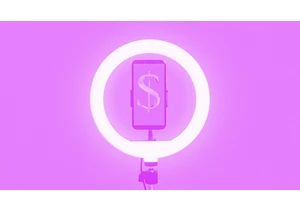Over the past year, Elon Musk notched a huge, slow-motion win. In a matter of months, one automaker after another signed up to adopt Tesla’s EV charging plug. The company’s huge network of Supercharger stations has been credited for laying the foundation for EV adoption, and the industry’s falling-in-line cemented Tesla’s technology as the nation’s de facto standard, unlocked federal funds, and hinted at a potentially giant business for Tesla, as a kind of energy utility.
Actually, the success was largely the accomplishment of a team run by Rebecca Tinucci, senior director of Tesla’s Supercharger group. Tesla featured her on stage during last year’s Investor Day, and Time put her on its Climate 100 list, saying that, to some, she’s “the driving force of the company.” And yet, in the sort of erratic move that has become normal at Tesla, this week Musk fired her and about 500 others on the charging team.
The decision, first reported by The Information and Electrek, came in an email late Monday to senior Tesla executives. Musk said Tinucci and Daniel Ho, director of vehicle programs and new products, would leave, and that by Tuesday morning he would also ask for the resignation of any executive “who retains more than three people who don’t obviously pass the excellent, necessary and trustworthy test.”
Musk’s cuts follow departures by other senior Tesla executives and a round of layoffs last month of “more than 10 per cent” of its workers, or more than 14,000 people. (That included its year-old marketing team.) The backdrop is a grimmer financial outlook: Quarterly numbers last week showed the company significantly missed delivery and earnings estimates, and suffered a year-on-year drop in sales. (At the same time, Tesla has asked shareholders to approve a $55 billion payout for the CEO.)
The firings also reflect another strategic shift at a company used to chaos. On a recent investor call, Musk had nothing to say about the charging network and downplayed the importance of car sales, but talked up autonomous driving and robotaxis. “We should be thought of as an AI or robotics company,” he said.
Tinucci, a six-year Tesla veteran, had helped oversee the build-out of the nation’s largest fast charger network, which has more than doubled in size since October 2021. Tesla said in its most recent earnings report that the number of Superchargers globally had grown in 2024 by 26% year over year, to a total of 6,249 stations, and over 57,000 connectors.
But following the layoffs, Musk said on X that the supercharger network would now grow “at a slower pace for new locations,” with “more focus on 100% uptime and expansion of existing locations.” Tesla, which has also eliminated its public relations department, did not respond to a request for comment.
Not every person who works on charging at Tesla had been fired. Reached by phone on Tuesday afternoon, one top executive who works on charging declined to comment, but said that they were still employed—“as of this minute.”
Pulling the plug
The decision to gut the Supercharger team blindsided automakers gearing up to equip new EVs for customers to use the Supercharger network, and contractors helping to install and maintain the existing stations. It also baffled even Tesla’s most ardent enthusiasts. The charger network is widely considered—even by detractors—to be Tesla’s biggest competitive advantage. The company has built the largest fast charger network in the U.S., and this year opened it up to other automakers, which have been signing deals to adopt its plug standard, known as J3400, or the North American Charging Standard.
In the process, Tesla’s network has become a linchpin in the Biden administration’s efforts to grow the country’s EV infrastructure. With its relatively low construction costs—enabled by large economies of scale and a vast network of partners—the company has also won the highest percentage of electric vehicle charging awards of any company from President Biden’s infrastructure law, amounting to more than $17 million in grants so far.
A spokesperson for the Joint Office of Energy and Transportation, which helps oversee the deployment of charging stations funded by the National Electric Vehicle Infrastructure (NEVI) Program, said the cuts would not slow the administration’s efforts.
“Because NEVI provides grants to states, which run competitive procurements to select vendors, we don’t expect individual business decisions to impact EV charging projects funded by the Bipartisan Infrastructure Law,” the spokesperson said.
Still, cutting the Supercharger unit will slow the growth of fast charging stations at precisely the time when many observers say more stations are needed, especially amid wavering consumer confidence in their availability and in EVs in general. The cuts appear to have already impacted the roll-out in New York City: Electrek reported Tuesday that the company backed out of four leases for upcoming Supercharger locations in Queens and Brooklyn. One contractor told Reuters that the sudden news was “a major kick in the pants.”
The Supercharger unit has also been responsible for servicing and maintaining a vast network of existing stations: Currently, Tesla operates about 57,000 Supercharger connectors globally, and more than 6,200 fast charging stations in the U.S, or more than half of the country’s total, according to Department of Energy data.
Fast chargers barely existed when the company began selling its first sedan, the Model S, in 2012. Fast forward a decade and Tesla’s charging network had become an exclusive perk for Tesla drivers, and were mostly incompatible with other EVs. Then, after a deal with the White House in February last year, Tesla agreed to open several thousand of its chargers to non-Tesla drivers. Ford then said it would build Tesla’s charging technology into its vehicles by 2025, and provide customers with adapters in the meantime. Other automakers followed suit. In February, Stellantis, which makes Jeep, Dodge, and Ram brands, agreed to adopt the Tesla standard, too. (Some automakers had used chargers built with the main competing standard, the Combined Charging System, or CCS, but many of these have been buggy.)
To help with adoption, Tesla has also recently been building passive adapters for its plug for Ford, Rivian, and other automakers at its Buffalo plant. A first round of job cuts at the factory, disclosed in a filing with the state Labor Department reported by the Buffalo News this week, indicated that 280 jobs will be eliminated out of a total of 2,025 workers at the factory, which has also been building prefabricated Superchargers and solar panels.
Tesla makes money on charging, too. Along with its home-battery business, where profits were up 140% year-on-year, charging has also been a rare area of growth for the company. Tesla doesn’t disclose its Supercharger earnings numbers, but Bloomberg NEF recently estimated the company generated around $1.74 billion of charging revenue last year, roughly 1.5% of total revenue. By 2030, Bloomberg estimates that Tesla could make $7.4 billion per year, or around 6% of the global charging business.
”And we are just getting started,” a senior manager for site acquisition wrote on LinkedIn when he posted the Bloomberg story.
But why?
Tesla owners agonized over Musk’s move on Reddit. The speed of the roll-out “was already a fairly slow pace as it was,” one customer wrote. “Can still only barely make it from Texas to Colorado or New Mexico,” wrote another. “This fucking boils my blood,” added a customer in Poland, where “Tesla needs to at least triple or quadruple the locations.”
Why’d Musk do it? Some suspect the CEO was trying to make a point to other execs, using Tinucci and Ho as stark examples.
“Hopefully these actions are making it clear that we need to be absolutely hard-core about headcount and cost reduction,” Musk said in his email announcing the cuts. “While some on exec staff are taking this seriously, most are not yet doing so.”
Others have speculated that, now that the Tesla plug has become standard, and other companies are incorporating it, Musk wanted to stop spending on growing and maintaining a network that would increasingly benefit his rivals. Tesla has also bristled under government rules that come with public funds for its charging network, including installing credit card readers on its stations; Tesla prefers to run payments through its own smartphone app.
Loren McDonald, an electric vehicles analyst and the founder of EVAdoption, told Fast Company he’d been trying to piece together Musk’s thinking, and could see some logic in a pull-back.
“When sales slowed, he likely looked at everything and realized that the huge investment in more SC stations was not leading to more EV sales,” he said in an email. Still, “I and many others also think that in typical Musk fashion, a few weeks from now he might realize he cut too deeply, and start bringing some folks back.”
One Supercharger job opening posted in March and now in question was focused on working with other companies to expand the rollout of the charging standard.
“The [North American Charging Standard] effort alone requires immense industry collaboration, and this person will play a key role in pushing EV charging forward with industry players on this and many other exciting and impactful programs,” William Navarro Jameson, who was then Tesla’s Strategic Charging Programs lead, wrote on X.
Dozens of job listings that appeared on the Tesla website last week are now gone, except for apprenticeship roles at factories in California, Nevada, and Texas.
“What a wild ride it has been,” Jameson wrote Tuesday on X, formerly Twitter, where job cuts by Musk have also decimated the workforce. Musk’s first email to Twitter employees, like his email this week, came late at night, and warned them to commit to an “extremely hardcore” workload or get fired.
George Bahadue, a senior manager in Supercharger site acquisition who was axed in the layoffs, said on LinkedIn that he was “still processing” the news. But he thanked a team that “made EV adoption possible… conquered the impossible, scaling infrastructure faster and more cost efficiently than anyone.”
Another former employee, Lane Chapin, wrote on LinkedIn that “Elon is about speaking directly, and I am, too.”
“If you would have told me a month ago that Tesla was a company that would notify people, some with 10+ years of experience, who helped build the company to what it is today with nothing more than a “Dear Employee” email in middle of the night, I would have said you’re nuts,” he wrote. “Treating others with respect is a first principles approach to success, in my opinion.”
Ak chcete pridať komentár, prihláste sa
Ostatné príspevky v tejto skupine



Yahoo’s bet on creator-led content appears to be paying off. Yahoo Creators, the media company’s publishing platform for creators, had its most lucrative month yet in June.
Launched in M

From being the face of memestock mania to going viral for inadvertently stapling the screens of brand-new video game consoles, GameStop is no stranger to infamy.
Last month, during the m

The technology industry has always adored its improbably audacious goals and their associated buzzwords. Meta CEO Mark Zuckerberg is among the most enamored. After all, the name “Meta” is the resi

Even as AI becomes a common workplace tool, its use in

Finding a job is hard right now. To cope, Gen Zers are documenting the reality of unemployment in 2025.
“You look sadder,” one TikTok po
